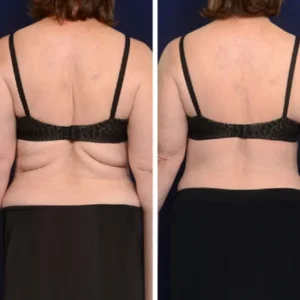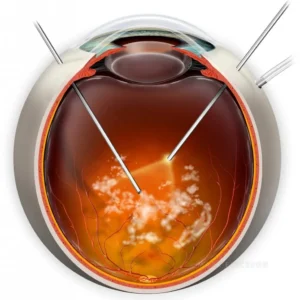Description
Familiarity with Treatment
Subtotal thyroidectomy, also known as partial thyroidectomy, is a surgical procedure that involves the removal of a large portion of the thyroid gland, leaving a small remnant of thyroid tissue in situ. This procedure is commonly performed to treat conditions such as Graves’ disease, large goiters, or hyperthyroidism, aiming to reduce the symptoms associated with these conditions while preserving some thyroid function.
Procedure
During a subtotal thyroidectomy, the surgeon makes an incision in the front of the neck and carefully removes a significant portion of the thyroid gland, leaving a small remnant of tissue. The surgeon takes precautions to identify and protect nearby structures, such as the parathyroid glands and the recurrent laryngeal nerves, to minimize the risk of complications. The incision is then closed with sutures or surgical staples. The procedure is typically performed under general anesthesia.
Who is it Suitable For?
Subtotal thyroidectomy is suitable for individuals with conditions such as Graves’ disease, large goiters, or hyperthyroidism, where reducing the size and activity of the thyroid gland can alleviate symptoms and improve the individual’s health. It may also be considered in cases where preserving some thyroid function is desirable.
Who is it Not Suitable For?
Subtotal thyroidectomy may not be suitable for individuals with extensive or diffuse pathology affecting the entire thyroid gland, where complete removal of the thyroid (total thyroidectomy) is necessary. Additionally, individuals with specific contraindications to surgery or those who are not candidates for general anesthesia may not be suitable for this procedure.
Advantages
Advantages of subtotal thyroidectomy include:
- Preservation of a small remnant of thyroid tissue, potentially reducing the risk of hypothyroidism compared to total thyroidectomy.
- Reduction in the size and activity of the thyroid gland, alleviating symptoms associated with conditions such as Graves’ disease and large goiters.
- Potential for improved postoperative recovery and reduced impact on thyroid hormone levels.
Complications
Complications of subtotal thyroidectomy can include temporary or permanent damage to the parathyroid glands, which can lead to low calcium levels (hypocalcemia), temporary or permanent damage to the recurrent laryngeal nerves, which can cause voice changes or difficulty speaking, bleeding, infection, scarring, and the need for lifelong thyroid hormone replacement therapy. However, it is important to note that the risk of complications is generally low, and the procedure has been performed successfully in numerous cases.
Preoperative Care
Preoperative care for subtotal thyroidectomy involves a comprehensive evaluation by a healthcare provider to determine the need for surgery and the most appropriate approach. This may include medical risk reduction, diagnostic tests, and discussions about the procedure, potential risks, and expected outcomes. Informed consent is obtained, and preoperative assessments are performed to ensure the individual is in optimal condition for surgery.
Postoperative Care
Postoperative care for subtotal thyroidectomy includes monitoring for complications such as bleeding, infection, and changes in calcium levels. Thyroid hormone replacement therapy may be initiated if necessary. Regular follow-up appointments are scheduled to monitor thyroid hormone levels, assess for recurrence or complications, and adjust medication as needed.









Reviews
There are no reviews yet.